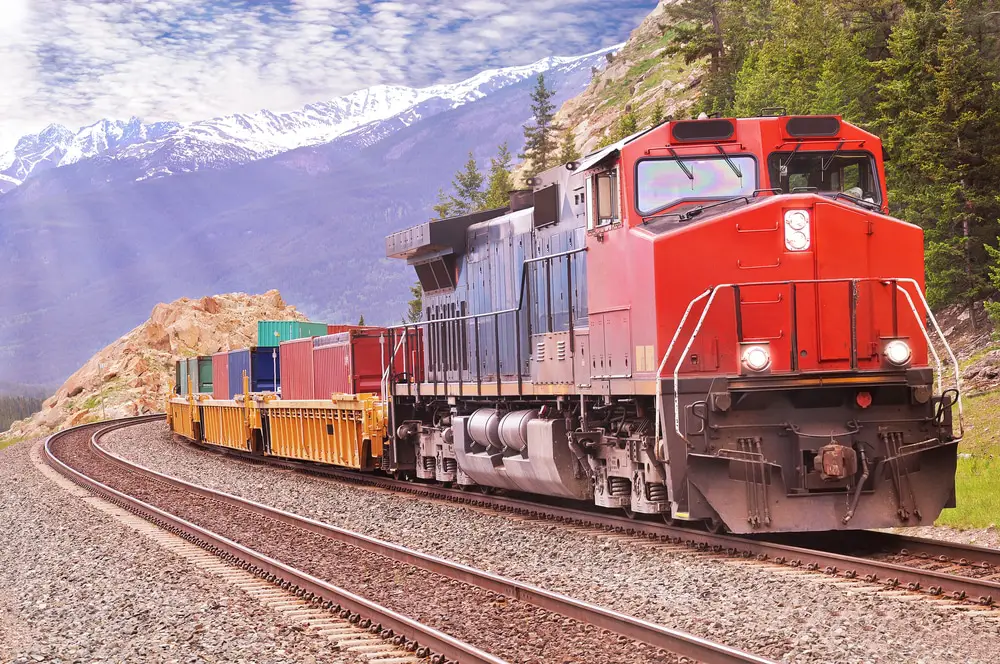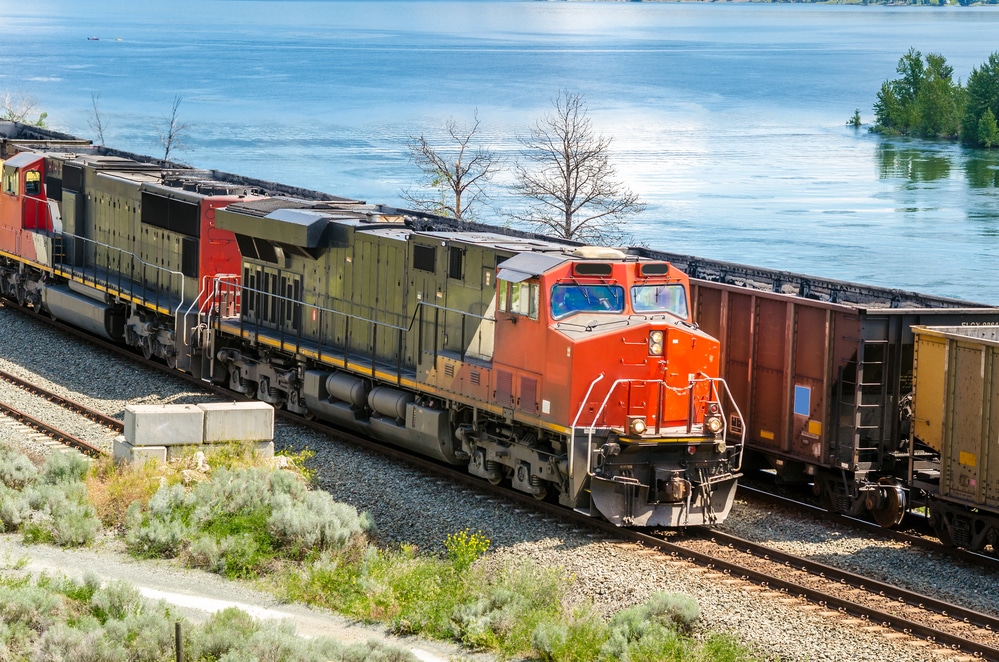So, what is a consist? A train’s locomotive consist is the number of locomotives used to pull the train. On the other hand, a train consist is the number of locomotives and cars traveling together that make up a train.

Nowadays, it’s very typical to see many units making up a single train. Today’s modern freight trains feature numerous cars. In fact, one locomotive can haul nearly 200 cars!
In rail transportation, the word “consist” is what defines the collection of the cars that make up a train.
Let me break it down for you.
What Is A Consist: Locomotive Consist vs Train Consist
If you didn’t already know, the words train and locomotive refer to entirely different things.
A locomotive is a vehicle that generates the electricity required to propel a train.
On the other hand, the train is a set of linked coaches or wagons pulled by the locomotive.
Both “locomotive consist” and “train consist” refer to the same general concept. However, each of them applies to a different set of vehicles.
Locomotive Consist
A locomotive consist is the total or number of locomotives used to pull the train. This is also sometimes called the motive power consist.
For example: “What is the locomotive consist for this train?” “Three locomotives”
Train Consist
The train consist, on the other hand, is the total of the cars and locomotives that make up the whole train.
For example: “What is the train consist?” “Three locomotives AND eight cars”
These two terms are used by railroad workers operating a multiple-unit locomotive.
Multiple Unit Locomotive: How It Works
Now, have you ever wondered how a train consisting of several cars and carriages can move as a single unit?
Think about it. How can a single engineer possibly control many of those at once?
This is done by a multiple-unit (MU), which refers to multiple locomotives connected.
An MU is powered by a 27-pin connector. It enables the front locomotive’s circuits to regulate those of the following locomotives.
Think of it this way: the first locomotive is the leader. And the other locomotives behind it follow suit. It’s also like a flock of birds. There is a leader, and the flock of birds follows it during their journey.
These locomotives also have a variety of air hoses that manage the following:
- Independent actuator
- Independent brake
- Air reservoir
The locomotive consist when joined and equipped with numerous unit hoses, create a massive air reservoir and more air pressure. This high air pressure is what allows the train to stop.
The locomotive engineer manages the consist by assigning the first locomotive as its “leader”, while the other locomotives follow the units.
The team then verifies that each unit is operational and ensures that all controls are functioning properly.

Why Railroads Use A Multiple Unit: 2 Main Reasons
With that, you might wonder why railroads need to do this. Why can’t one single locomotive simply pull multiple cars?
1. It’s Cost-Efficient and Productive
Let’s say there is a train consist of 150 cars and six locomotives. Without the multiple-unit system, the train would require ten separate personnel to operate the trains.
That would be six more salaries, too!
2. Reduces Strain
Imagine if the same train consist above had different placements for engines. Let’s say there’s one engine in front, three in the middle, and three in the back.
There would be too much pressure coming from different areas.
The multiple-unit system arrangement reduces strain on the train’s drawbars. Without it, it would otherwise be placed under the weight of 150 cars — being pulled by a single engine.
What Is A Consist? The Bottomline
A consist describes the number of locomotives or cars in a train. A locomotive consist is the total of locomotives used to pull the train.
The train consist, on the other hand, is the total of the cars and locomotives that make up the whole train. These terms come hand in hand when talking about the multiple-unit system.
